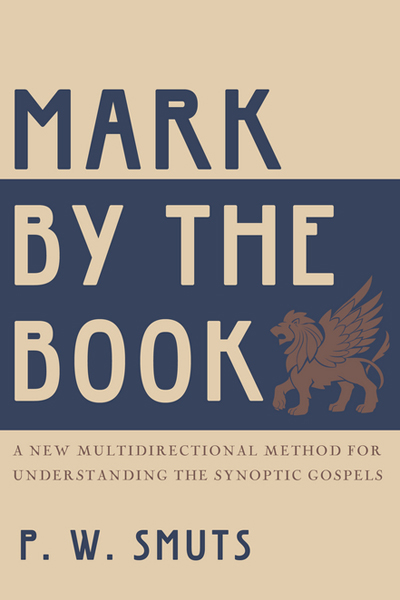
Peter W. Smuts
Reviewed by: Roger W. Schmurr
Mark by the Book: A New Multidirectional Method for Understanding the Synoptic Gospels, by Peter W. Smuts. P&R, 2013. Paperback, 260 pages, list price $17.99. Reviewed by OP minister Roger W. Schmurr.
Allen Curry remarked once that in his travels among OP congregations, he noticed that church members were more familiar with the New Testament epistles than with the Gospels. Peter Smuts wants church members to be familiar with the Gospels, so that they will understand the epistles.
"The point is that the Gospels and the rest of the New Testament revelation represent two different periods in redemptive history. . . . [T]he interpreter of the Gospels cannot insist on a simple and straightforward application of the Gospels in the church age; the progress of redemptive history may have brought changes or introduced elements of discontinuity" (p. xx), Smuts explains.
The author explores the gospel of Mark to demonstrate a four-step approach for properly understanding any of the Synoptic Gospels. Start with a downward reading of the gospel. That is, explore what the immediate text says and any information Mark includes around it. Does the theme show up elsewhere in the gospel? Is Mark including accounts that prove his opening statement that Jesus is "the Son of God"? Do you see a progression of this theme in this gospel?
Move to a sideways reading of Mark's gospel, a close examination of what details he includes that the other gospel writers don't. Note, for instance, how Mark alone refers to the woman requesting healing for her daughter: not generically as a Canaanite, but as "a Gentile, a Syrophoenician by birth." Only Mark notes that the daughter is her "child," a not-too-subtle reference to the children who have a right to the table of the Lord's mercy (7:27–30). Mark is building his case that the gospel is for Gentiles too.
Your eyes are glazing over by now, since you already employ these two interpretive steps in some ways. But now Smuts offers you the theological equivalent of Starbucks' vanilla blond-roast coffee with a backward reading of the text, a stimulating exploration of the Old Testament background to what Mark is writing. In one case, the author uses five pages to point out the many parallels between Jesus' transfiguration and the events at Mount Sinai. Rich material here.
Rich, too, was the man who asked Jesus what he should do to inherit eternal life. Smuts uses this account to illustrate his last step, the forward reading. See how the rest of the New Testament develops gospel themes. Jesus told the inquirer to sell everything he had and give the proceeds to the poor. But Jesus' command is never repeated in the Bible beyond the Gospels. Instead of universalizing Jesus' command, the apostle Paul instructs the rich to be generous and willing to share what they have, so that they provide a firm foundation for the age to come (1 Tim. 6:17–19).
Smuts even uses his four-step approach to argue for the shorter ending to Mark's gospel. This is not a full commentary, but it offers more than most commentaries do on the sixteen passages it handles.
September 07, 2025
August 31, 2025
J. N. Darby and the Roots of Dispensationalism
August 24, 2025
August 17, 2025
Reformed Covenant Theology: A Systematic Introduction
August 10, 2025
August 03, 2025
July 27, 2025
© 2025 The Orthodox Presbyterian Church